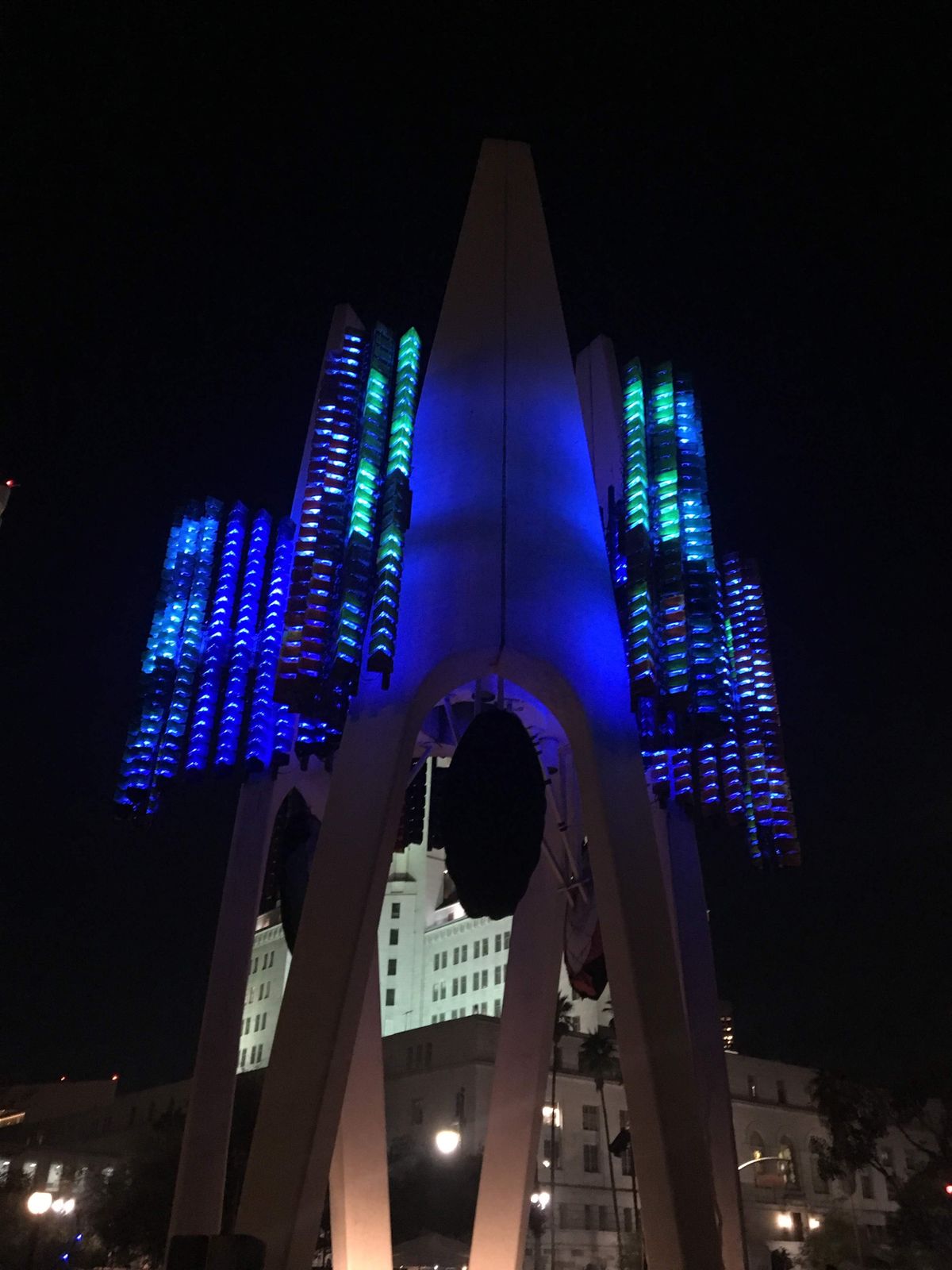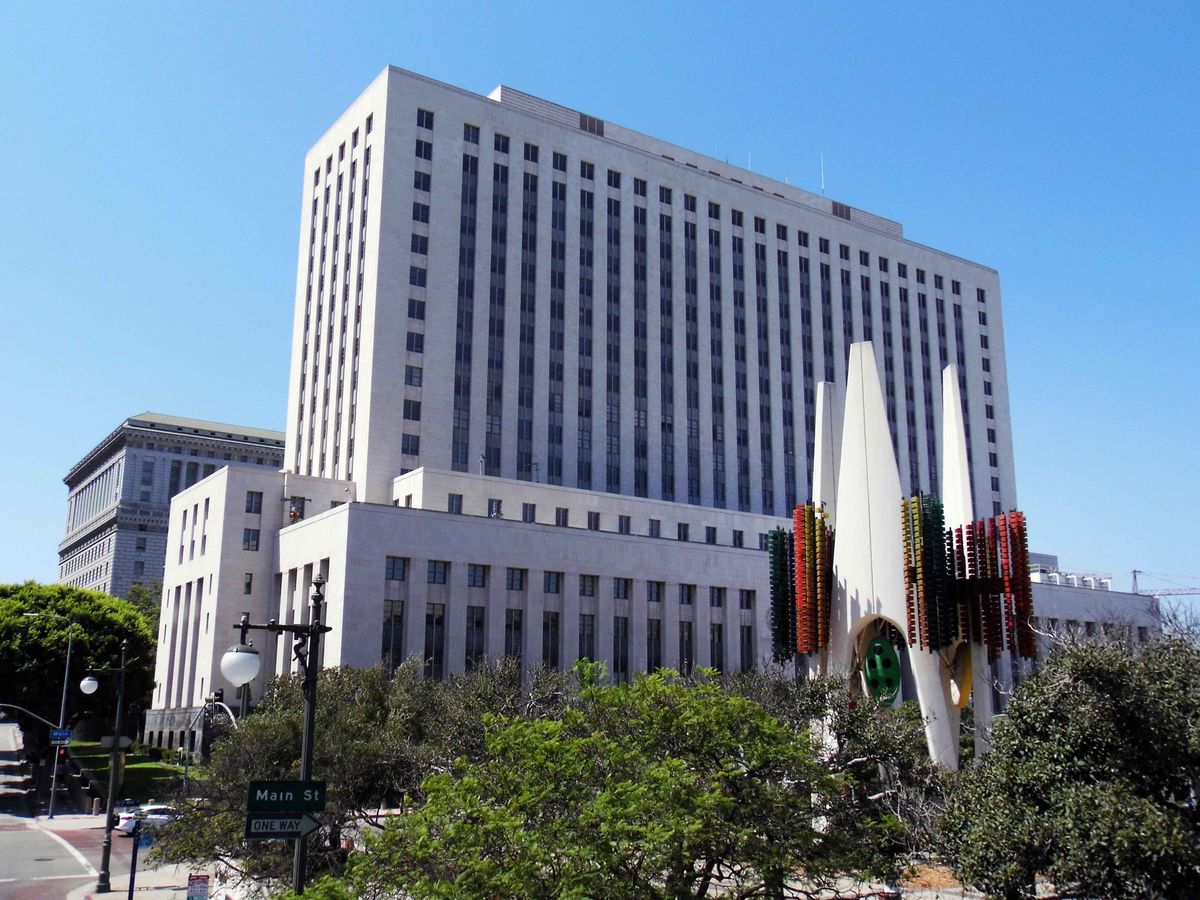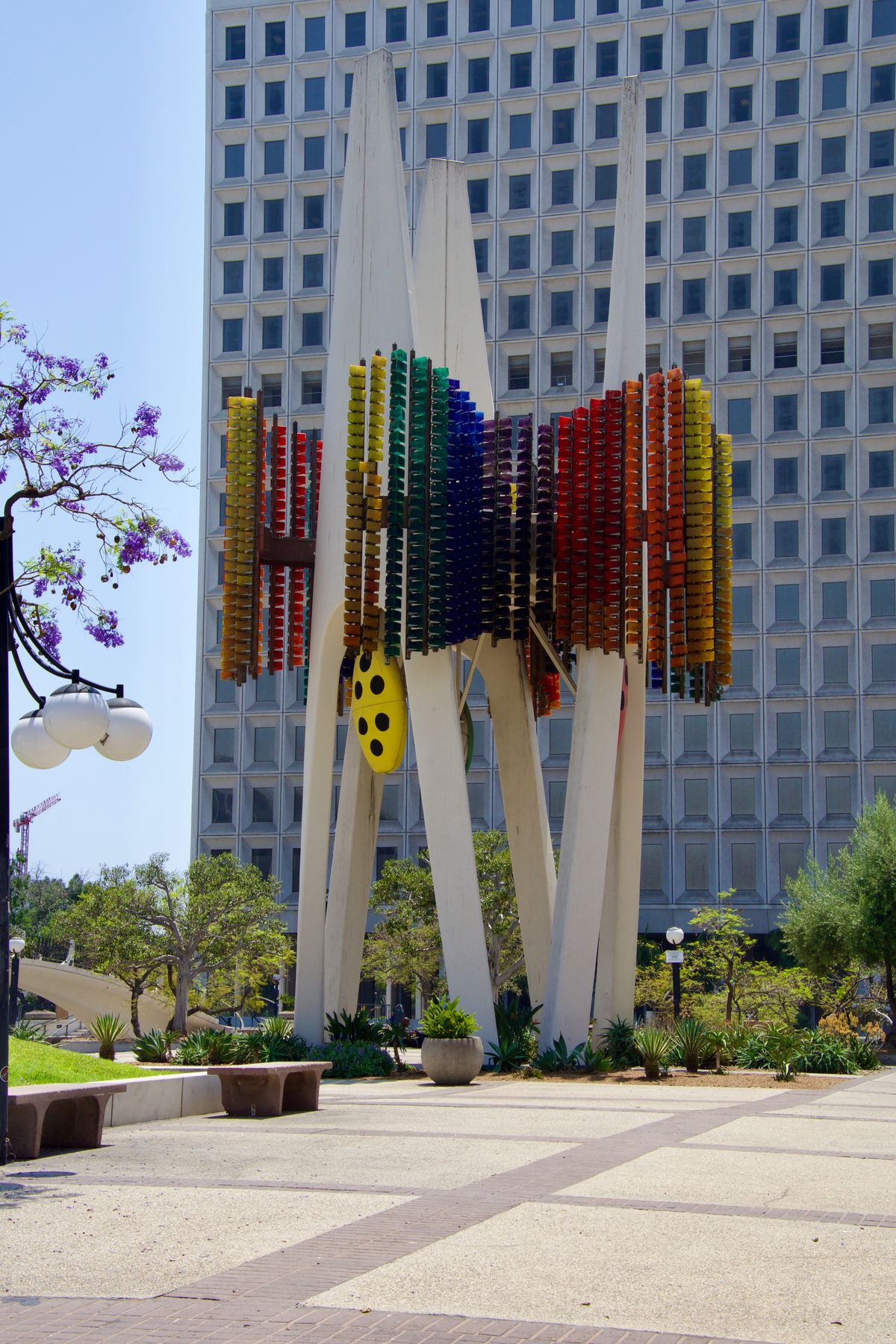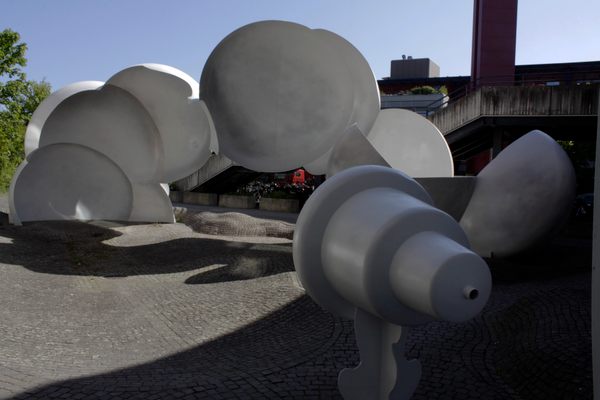About
In 1975, artist Joseph Young was commissioned to build a sculpture near Little Tokyo in Los Angeles. Once commissioned, Young decided to turn what would’ve been an ordinary sculpture into something much more otherworldly.
At the height of six stories and the weight of 60 tons, the Triforium sculpture in Los Angeles was Young’s big opportunity to create, in his own words, “the world’s first polyphonoptic tower.”
Young devised a radical, groundbreaking plan to make the Triforium track the footsteps and conversations of everyone around it. The sculpture would then convert these motions into patterns of light, which were to be displayed on the Triforium's 1,494 multicolored glass prisms. These movements would also activate the sculpture's 79-pitch carillon bell towers, which would play "everything from Beethoven to the Bee Gees."
Young also envisioned the Triforium to be an international epicenter of astronomy. Young’s visionary plan involved making the sculpture the “world’s first ever astronomical beacon,” with giant, powerful laser beams pointed towards the sky. According to his plan, the beams would spell out "Los Angeles" in Morse Code.
Unfortunately for Young, he couldn’t fit these ideas into a $925,000 budget. The laser beam proposal had to be completely abandoned, and although the Triforium’s prisms and bells were installed, they were never given the capacity to track motion as Young intended. To make matters worse, the reflecting pond beneath the Trifolium began to drain, requiring $18,000 in repairs. Pigeons began to cover the Triforium, and it became subject to ridicule throughout LA. Art critics repeatedly called the Triforium "three wishbones in search of a turkey."
The sound system was problematic from the get-go, with computer malfunctions causing the bell tower's audio to sound unpleasantly fuzzy. When Young finally got the bell tower to work, a judge from the courthouse across the street complained that the sound interfered with his trials and asked the city to take it down.
As of today, the Triforium still stands, but not as Young imagined in the slightest. Although he originally intended for his sculpture to be the “Rosetta Stone of art and technology,” today it is better known by a different name: Los Angeles’ most controversial public artwork.
Related Tags
Community Contributors
Added By
Published
October 20, 2016
Sources
- https://en.wikipedia.org/wiki/Triforium_(Los_Angeles)
- https://www.kcet.org/shows/artbound/the-triforium-a-second-life-for-los-angeles-polyphonoptic-sculpture
- http://la.curbed.com/2015/11/23/9897194/triforium-sculpture-restoration-los-angeles
- http://www.avoidingregret.com/2017/08/photo-essay-triforium-disco-spaceship.html



























































